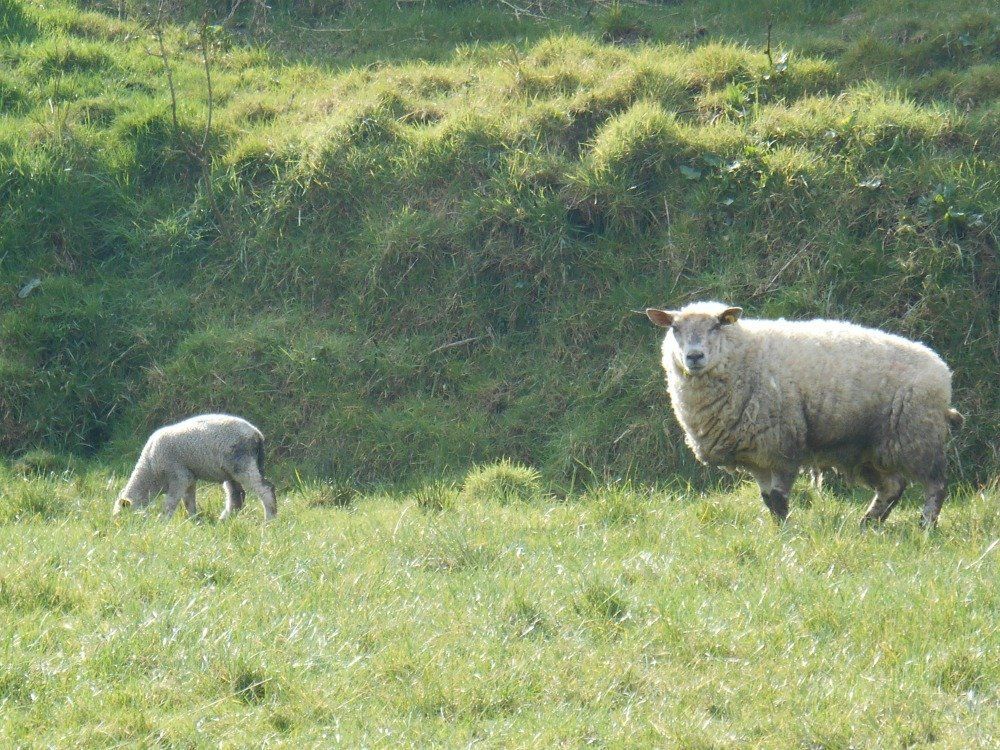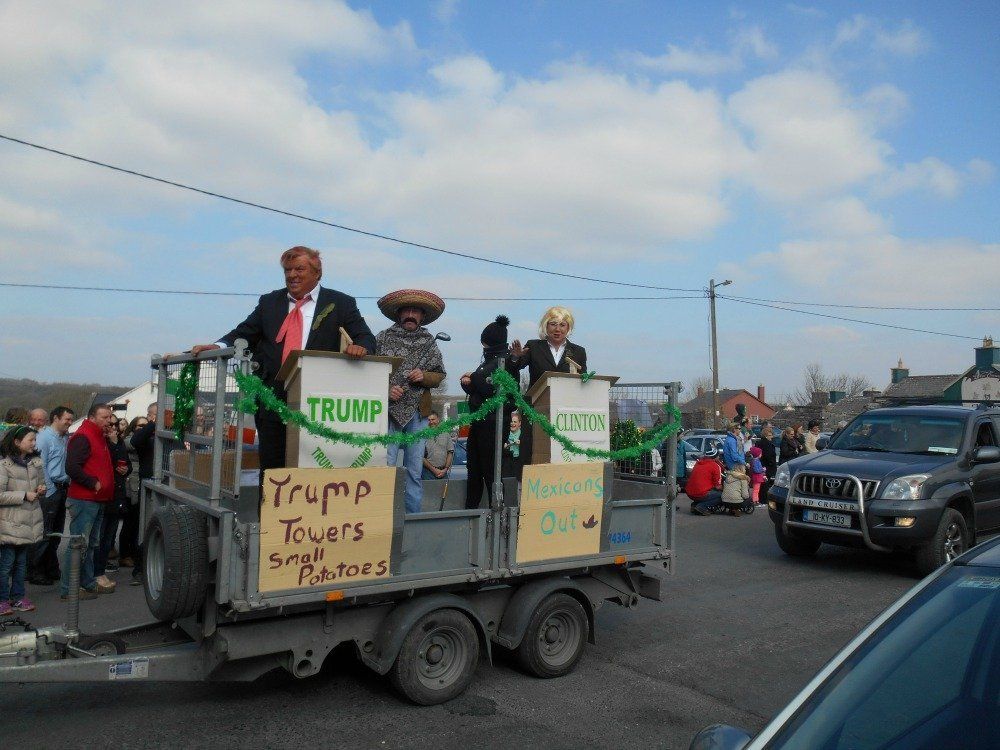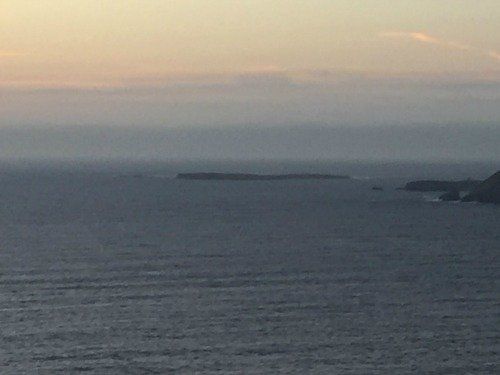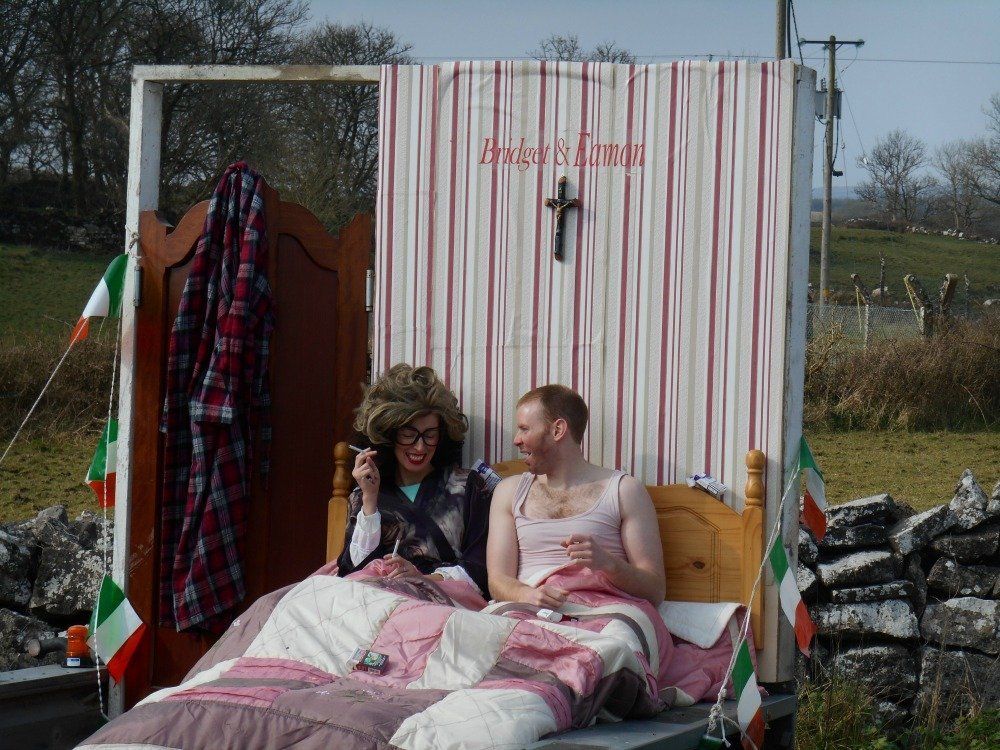From Slave to World Icon
“In terms of
meaning-making processes and engagement of diverse peoples with St Patrick’s
Day celebrations, St Patrick and his feast day can easily be utilised in
different ways for different people. It can be a religious celebration, a
children’s day out to watch the parade, an adults’ pub-crawl, a revelry in
being Irish, a connection for diasporic communities with the ‘homeland’, or a
time to reflect on our country’s intricate religious history”.
Dr Jenny Butler. Department of Study of Religions, University College Cork.

THE SAINT
We’ll start with the good news – the
saint did exist. Patrick is for real. He is credited with two short
auto-biographical writings in Latin – Confessio
and Peccato.
He was born in Britain,
a son of a Roman noble and was subsequently captured in Ireland and enslaved. Patrick
was forced to work as a sheep herdsman during his period in captivity.
He eventually escaped and is credited with a successful 5th century
Christian mission in Ireland.
The writing of the saint’s life (hagiography) took hold from the 7th
century. Many baseless legends were
ascribed to Patrick. The shamrock and snakes are part of the ideological
bedding down of the cult of Patrick by imaginative scribes
Patrick’s date of death is the 17th of March – the feast day now celebrated across the world. Pádraig O’Riain points out that the 17th of March is one of the three main Patrick events in the calendar. The Croagh Patrick pilgrimage in Mayo on the last Sunday in July is the second one. The last great Patrick event in the calendar is the 3 day August pilgrimage at Lough Derg Island in County Donegal.
Reference - A Dictionary of Irish Saints Pádraig O’Riain. Four Courts Press. 2011.
THE PARADE
The first St. Patrick’s Day parade
took place in the United States on March 17, 1762, when Irish soldiers serving
in the English military marched through New York City. St Patrick’s Day parades
became widespread in the U.S. in the 1800s as expressions of national identity
by Irish-American communities. American-style parades gained traction in cities
in the Ireland of the 1970s. However, many of the 100s of rural Irish parades
are known for their informality and quirkiness.
Over 0.5 million will attend the Dublin Parade. 10,000 will pack the streets of
the county town of Clare i.e. Ennis, where the Grand Marshall will be the
oldest Patrick in the county, 97 year old Patrick Wall from Kilmihil.
I myself attended my local parade in
Kilfenora, a North Clare village with 220 inhabitants. As ever it was a
charming, quirky affair with the participants doggedly refusing to take
themselves too seriously.
The ancient captive on a peripheral island has latterly morphed into a robust global brand. Patrick is celebrated today right across the English-speaking world and beyond. 20 world landmarks are being coloured green in honour of Ireland’s patron saint. They include the Niagara Falls and sections of the Great Wall of China. It’s hard to know what the poor man would make of it all!

PATRICK AND THE LANDSCAPE
Even outside of March 17th,
it is hard to avoid Patrick as his name is written across the Irish landscape
with churches, holy wells, community halls and a whole plethora of other natural
and built features dedicated to him.
Examples of Patrick dedications in the Burren include St Patrick’s holy well, Abbey Hill ; St Patrick’s church, Fanore (1870) and St Patrick’s community hall, Corofin (1945). My favourite Patrick site in the region is the holy well Bullán Pádraig (St Patrick’s hollowed stone) in Poulnalour, Killinaboy.
The well is located in mature native woodland. It consists of a natural spring gushing from the limestone. The site has intrigued me for years as the imprint of St Patrick’s crozier on stone (presumably a bullán or hollowed stone) has been recorded there. However, I have been unable to find it.
Folklorist Máire Mac Neill documented a Patrick crozier impression in the valley of Gleann Tochair in County Donegal. The impression is said to be left in the stone since Saint Patrick destroyed Tachar, “the serpent that presided over the valley”.
Patrick and the serpent(s) often feature in the legends as the latter seem to
symbolise the Paganism which Patrick was supplanting with Christianity.
I have not given up hope yet of finding the crozier imprint at Poulnalour.
Reference – The Festival of Lughnasa, Máire Mac Neill. Comhairle Bhéaloideas Eireann. First published 1962
SAINT TASACH. SAINT WHO?
Rathlin O'Beirne island is a long way from the St Patrick circus today. It is an uninhabited island right under the remarkable sea cliffs of Slieve League on the south west coast of County Donegal.
There are Early Christian ruins on the
island and a monk called Tasach (pet form of Assicus) is said to have lived
there as a hermit for a while.
Tasach was Patrick’s blacksmith and
holds the distinction of administering the last rites to him. He is part of the
huge panoply of Early Christian Irish saints along with Patrick and about 1,000
others. Tasach’s feast is celebrated on 27th April but there is not
even one Saint Tasach’s Day parade in the world!

CONCLUSION
Patrick has made the remarkable journey from Early Christian immigrant to key element in form ing an Irish cultural identity.
So on this lá na laethanta (day of days), it is well worth sparing a thought for some of Ireland’s 21st century immigrants - asylum-seekers and their children.
The majority of asylum seekers spend 3
years in an institutional setting called Direct Provision, with a
significant number of them waiting
for 7 years or more before their asylum application is heard.
Nasc
(Gaelic for link/bond) is an Irish immigrant support centre. It believes that this
long-term institutionalisation is harmful to asylum seekers, to their children,
and to Irish society.
Eamon Martin is archbishop of Armagh and Catholic Primate of all Ireland. As leader of the Catholic Church in Ireland, he has offered special St Patrick's Day greetings today to the country's immigrants and emigrants. Martin has asked for prayers for all displaced families and particularly for those caught up in what he termed the shocking refugee crisis in Europe
As Hozier would sing Amen Amen Amen Amen
Lá Fhéile Pádraig sona daoibh. Happy St Patrick’s Day!



